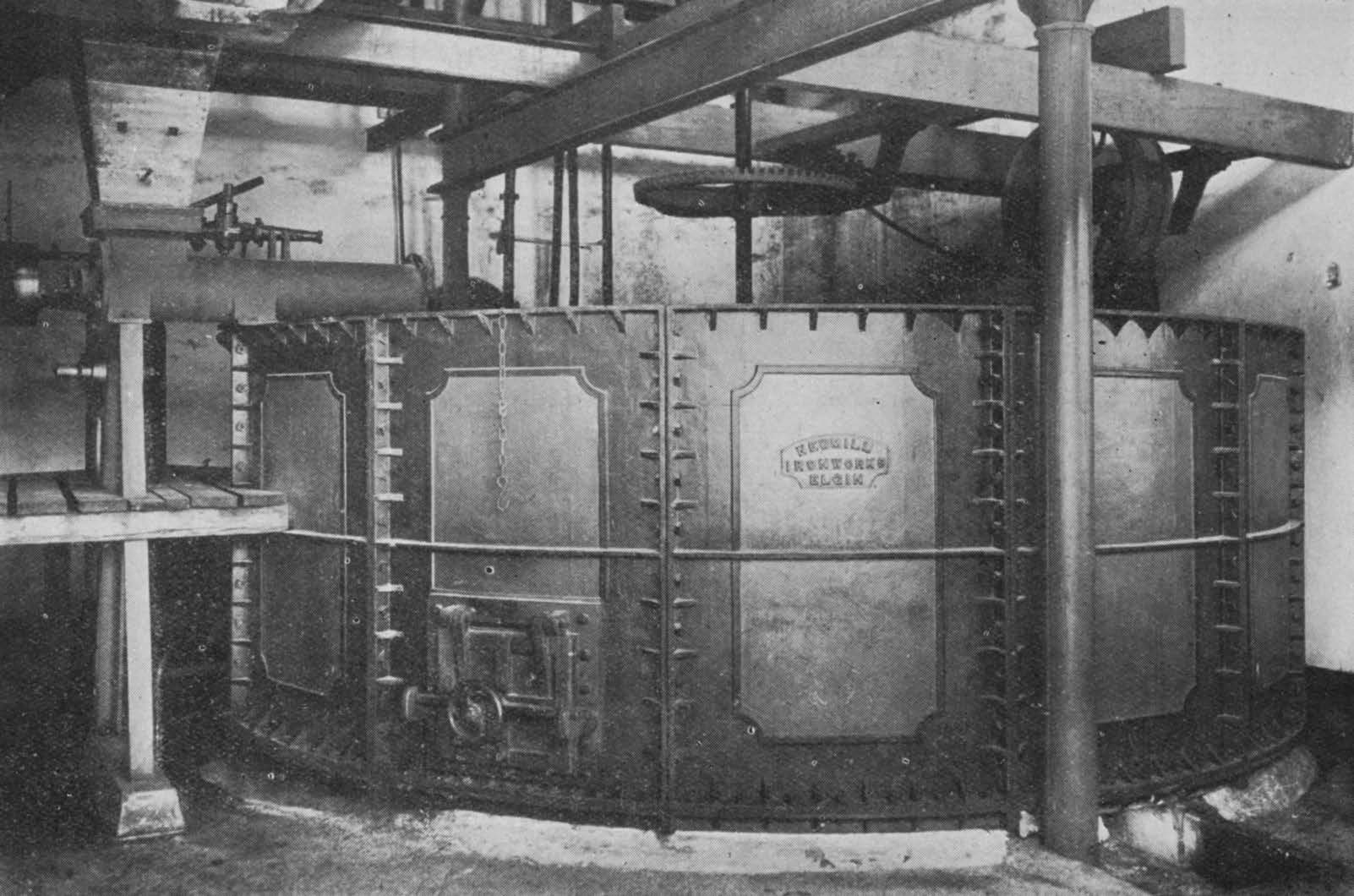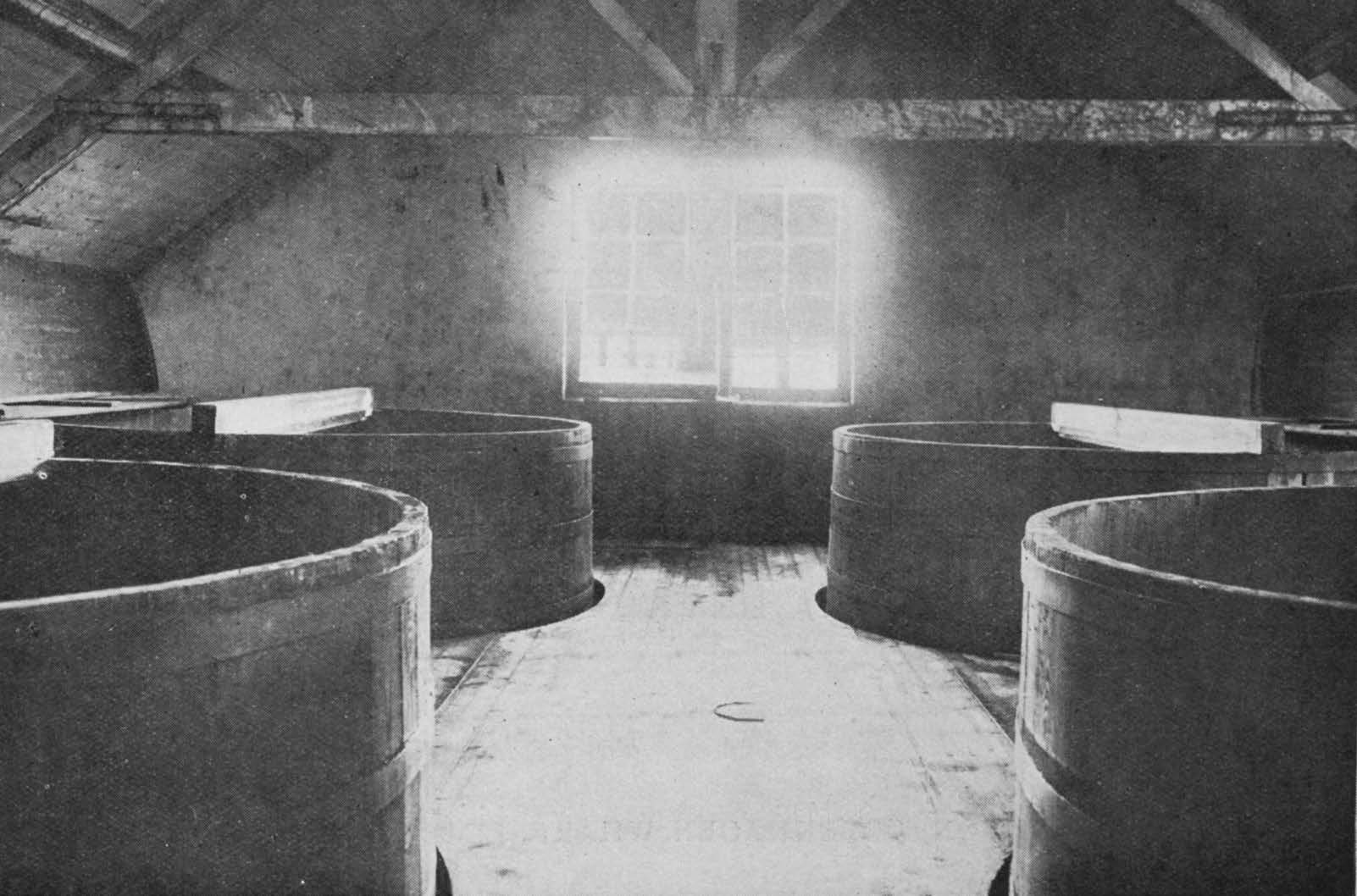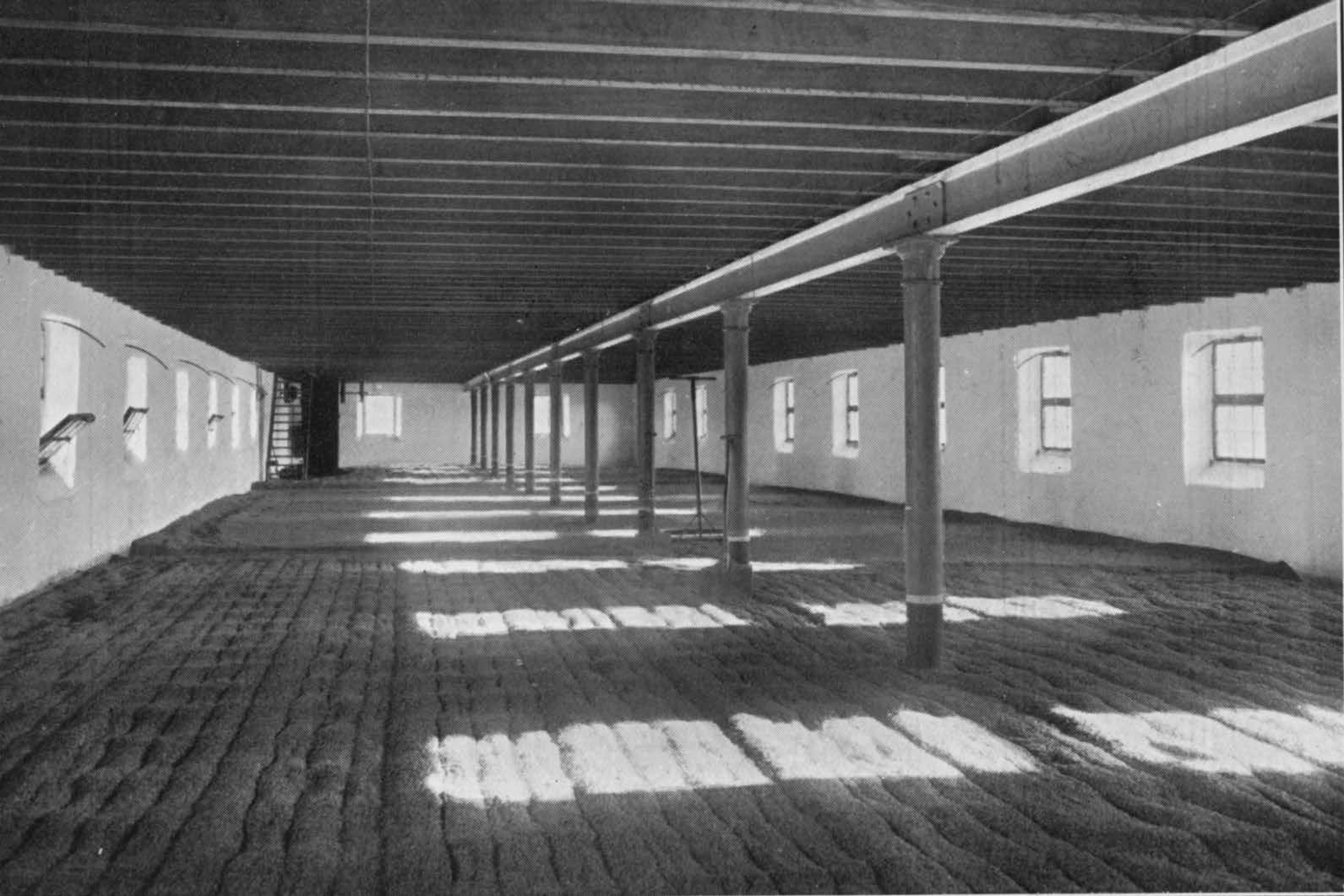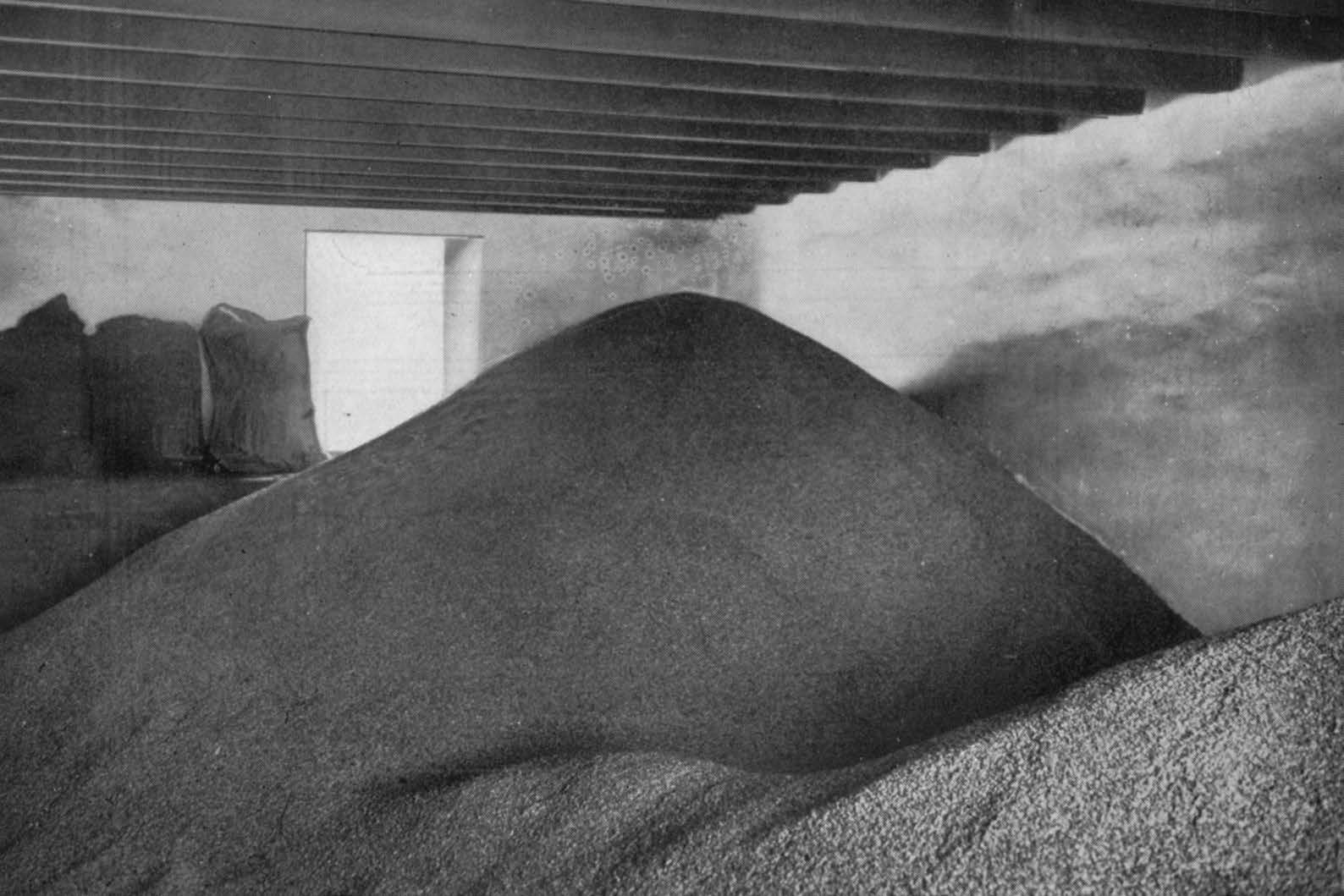CXXI
The Glen Elgin-Glenlivet Distillery, Longmorn, Morayshire
October 14th, 1927
The Glen Elgin-Glenlivet Distillery is situated about five miles from the Cathedral city of Elgin, from which it takes its name. The distillery occupies a site on the side of the London and North Eastern Railway, near the northern entrance to the Glen of Rothes. The distillery was built in 1897 from plans prepared by Messrs. Chas. C. Doig, architects, Elgin. A few years later the distillery was acquired by Messrs. J. J. Blanche and Co., Ltd., of Glasgow, who carried out extensive alterations in improvements. The premises are conveniently arranged and substantially constructed. Owing to the heavy gradient in the railway line the Board of Trade would not allow a siding at the distillery and transport is, therefore, necessary to convey goods and material to Longmorn Station, which is about one mile distant.
The maltings comprise an extensive building, one hundred feet long by twenty feet broad, with germinating floors and upper loft in which the barley is elevated in the usual manner. Each consignment of barley is passed through a special cleaning process before being conveyed to the various steeps, in each of which 20 quarters of barley can be immersed at one time. After germinating on the floors the malt is elevated to the kiln, which is floored with Hermann’s patent wire. The kiln fuel is a mixture of peat and coke and the furnace is controlled by a King’s patent regulator. The two large floors adjoining the kiln form the malt deposits to which the malt is conveyed after drying on the kiln. These deposits have a capacity for holding 600 quarters of malt. From here the malt is conveyed by elevator to the mill, which is an up-to-date model and is driven by a water turbine. The mash tun is an exceptionally large one in which 100 quarters of barley are mashed each week. The heating copper for supplying hot water for mashing has a capacity of 1,000 gallons.
Outside the tun room is placed a large horizontal refrigerator for cooling the wash on its way to the wash-backs. In the tun room there are four large wash-backs, which have a capacity of 3,000 gallons.
The still house contains two stills and two heating coppers, all of which are heated by furnaces. The wash still has a capacity of 2,400 gallons, and the Spirit still that of 1,646 gallons. Adjoining the still house is the receiver room containing two large Spirit receivers and Spirit safe. The Spirit store is situated across the yard and contains a vat of 2,500 gallons capacity. The warehouses, of which there are ten, occupy the opposite side of the yard, and are entirely detached from the main buildings. All the warehouses are specially constructed and planned to ensure the best possible maturing conditions. The warehouses have a storage capacity of 8,000 casks. The distillery and Excise offices are situated at the entrance to the yard, where there is also a large cooperage and cask shed. The garage, for motor transports, is situated on the main entrance road to the distillery.
The Glen Elgin-Glenlivet Distillery is fortunate in its mashing water, which has to be brought a considerable distance from a mountain spring. The water has been described by a famous analytical chemist as “the finest distilling water in Scotland.” The mashing water is pumped to a large concrete tank, which has a capacity of 2,000 gallons. At the rear of the distillery is a large dam which is fed by an intake from the Longmorn burn. Here is stored the water which is used for cooling and for working the specially constructed turbine which drives the plant for the distillery. The Whisky manufactured is high-class Highland pure malt pot still, and it is famous for its exquisite bouquet. The barley used in manufacture is the best Scotch and is mostly grown in the district. Eight hundred and forty bushels of malt are mashed each week, and the distillery has an annual output of 100,000 gallons. A little apart from the distillery are situated the Excise officer’s and manager’s house, and also cottages for the workmen. These, like the distillery buildings, are substantially constructed of fine stone. From a situation occupied by the houses one cannot fail to be charmed by the grand view of the purple clad mountains and beautiful undulating countryside.
Images © The British Library Board






